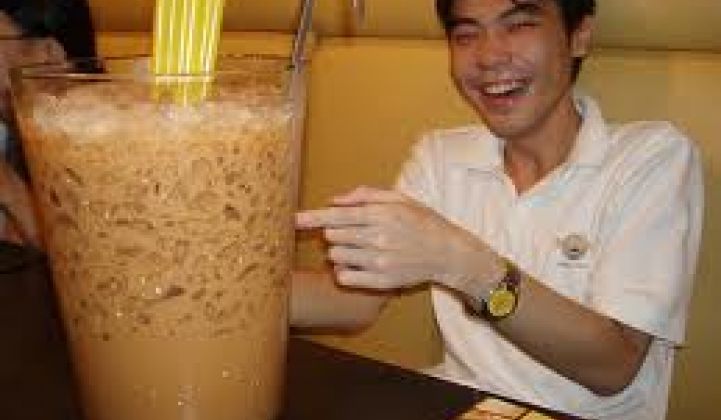Sacramento, Calif.--Who ever thought that the 64-ounce Big Gulp would get on the grid?
Ice machines, refrigerators, walk-in freezers and reach-in deli counters can all be added to demand response menus, said Carlos Haiad from Southern California Edison during a talk at the Emerging Technologies Summit. To that end, SCE has been conducting simulations and small trials to study the feasibility of such an approach.
If 50 percent of the ice machines in SCE's service territory were put on aggressive demand response programs, the utility could obtain 90 megawatts' worth of peak power. Curbing power to 20 percent of the display cases in its service region would harvest 43 megawatts, while doing the same with 20 percent of the walk-in coolers would yield 35 megawatts. Curbing power to 20 percent of the reach-in fridges could result in 24 megawatts.
"There are ranges of acceptable temperatures [for refrigerators], but within that range, there is a lot to play with," he said.
It is possible to be more aggressive with ice machines than freezers or fridges because ice machines come with a built-in storage unit. (You also can't get botulism from melted ice.) In one experiment, SCE rigged up an ice machine so that it wouldn't make ice between noon and 5 p.m. in most circumstances. If the ice tray fell below 25 percent capacity, the ice machine would make ice and override incoming demand response signals. If the ice tray was 30 percent to 50 percent full, the restaurant could not override the demand response signals. No one complained about a lack of ice.
Even more energy could be saved if fast-food outlets made all of their ice for a day the night before. But restaurants and convenience stores would have to make three times as much ice as they do now. "If you try to triple the size, they can't fit it in," he said. "Good ol' Taco Bell only has so much storage."
Demand response services and software -- which shut off or turn down appliances to conserve power -- primarily now harvest energy from air conditioning systems. A raft of startups hope to add commercial lighting systems to the menu. (Putting lights on networks would result in 219 megawatts for SCE, according to Haiad.) Thus, this seems to be a natural extension.
Other appliances that could join demand response, according to Haiad: hot food cabinets and vending machines. (Coffee is already there, noted Art Rosenfeld, the California Energy Commissioner and father of energy efficiency. Restaurants got rid of those hot plates for coffee pots in California years ago in favor of coffee machines that fill thermoses. The coffee tastes better, too.)
In another talk on demand response, Karen Herter of Herter Energy Research provided some insight into a small business demand response program conducted by local utility SMUD. In it, 78 offices, restaurants and retail outlets agreed to participate in a demand response program in which SMUD would turn down their air conditioners during hot summer days. On average, participants saved 25 percent on their bills.
Interestingly, the demand response signals came from the utility via the Radio Data System, which lets users send signals over FM radio. RDS has been criticized by some because it is uni-directional. Consumers can't send direct signals back to the utility via FM, although sensors over another means of transmission could send back information.
Despite that, RDS has another advantage: it's cheap. SMUD had to install an RDS server but the service only costs $500 a month. And that was to cover everyone in the program.
"It is very cheap to send a signal that goes to everyone," Herter said.



